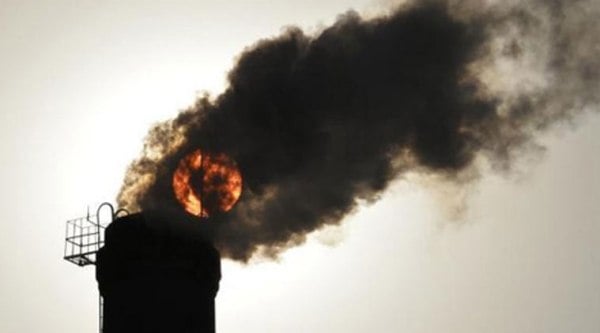Faster clearance, tougher penalty is new thrust in environment law
 The Indian Environment Service is supposed to be a “high quality”,
“environment-sensitive” specialised cadre that would man the new
institutions that are proposed to be put in place.
The Indian Environment Service is supposed to be a “high quality”,
“environment-sensitive” specialised cadre that would man the new
institutions that are proposed to be put in place.
Written by Amitabh Sinha
| New Delhi | Posted: November 19, 2014 2:17 am
Proposing a complete overhaul of the existing environmental
governance framework, a government-appointed expert committee has
recommended measures that would make it easier to set up industrial or
infrastructure projects, but would also ensure that those who flout
pollution norms or violate green laws are penalised heavily.
Among the measures suggested by the four-member committee headed by
former Cabinet Secretary T S R Subramanian are: creation of new
institutions — National Environment Management Agency (NEMA) and State
Environment Management Agencies (SEMA), a new “All India Environment
Service”, a “national laboratory” that will host a databank of all
environmental parameters, and introduction of digital and
“non-tamperable” methods of monitoring compliance.It has also proposed a new law to give a legal framework to all these and strict punishment for defaulters. While a first offence would be punished with a heavy fine, a repeat offence would straightaway invite closure of the unit or project.
“The new environment protection regime needs to be backed by the right people, right laws, right technology and right knowledge,”
Subramanian told The Indian Express after his committee handed over its report to Environment Minister Prakash Javadekar on Tuesday.
The committee, also comprising former Environment Secretary Viswanath Anand, retired Delhi High Court Judge Justice A K Srivastav, and former Additional Solicitor General K N Bhat, was asked to review six environment-related laws with the aim of bringing them “in line with current requirements”.
Subramanian said as far as the approval and compliance mechanism (for environmental appraisal of projects) was concerned, the committee had placed its trust in the principle of “utmost good faith”. “The industry or the agency putting up the project can be allowed to certify its own assessments of the environmental impact and propose measures to mitigate these in an affidavit. The appraising agency, equipped with data and technology, can accept these after proper verification. But once the clearance is awarded and the industry is found to be violating its own affidavit or any other rule or law, heavy penalties should be imposed immediately,” he said.
“Compliance and transparency is at the heart of the framework we are proposing,” he said.
The committee has also proposed the creation of a new “appellate court” which an industrial party can approach in case it is aggrieved by the appraisal and clearance process or imposition of penalties. It is proposed that this court should announce its verdict within three months.
The committee has called for a massive addition of capacities, both in terms of manpower and technology, to make the new system effective.
The Indian Environment Service is supposed to be a “high quality”, “environment-sensitive” specialised cadre that would man the new institutions that are proposed to be put in place.
On the forest side, the committee has recommended that the compensatory afforestation that companies are supposed to do in case their project involves diversion of any forest land should be doubled. Currently, afforestation is required in a 1:1 ratio, meaning companies have to bring under green cover an area that is equal to the forest area that is diverted.
Subramanian said eventually the legal framework on environmental governance should move towards an integration of all forest laws and all non-forest pollution laws like those on air, water and noise. But these are issues to be taken up at a later stage and have not been dealt with in the report.
are proposed to be put in place.
On the forest side, the committee has recommended that the compensatory afforestation that companies are supposed to do in case their project involves diversion of any forest land should be doubled. Currently, afforestation is required in a 1:1 ratio, meaning companies have to bring under green cover an area that is equal to the forest area that is diverted.
- See more at: http://indianexpress.com/article/india/india-others/faster-clearance-tougher-penalty-is-new-thrust-in-environment-law/2/#sthash.2NJUuLSx.dpuf
On the forest side, the committee has recommended that the compensatory afforestation that companies are supposed to do in case their project involves diversion of any forest land should be doubled. Currently, afforestation is required in a 1:1 ratio, meaning companies have to bring under green cover an area that is equal to the forest area that is diverted.
- See more at: http://indianexpress.com/article/india/india-others/faster-clearance-tougher-penalty-is-new-thrust-in-environment-law/2/#sthash.2NJUuLSx.dpuf
are proposed to be put in place.
On the forest side, the committee has recommended that the compensatory afforestation that companies are supposed to do in case their project involves diversion of any forest land should be doubled. Currently, afforestation is required in a 1:1 ratio, meaning companies have to bring under green cover an area that is equal to the forest area that is diverted.
- See more at: http://indianexpress.com/article/india/india-others/faster-clearance-tougher-penalty-is-new-thrust-in-environment-law/2/#sthash.2NJUuLSx.dpuf
On the forest side, the committee has recommended that the compensatory afforestation that companies are supposed to do in case their project involves diversion of any forest land should be doubled. Currently, afforestation is required in a 1:1 ratio, meaning companies have to bring under green cover an area that is equal to the forest area that is diverted.
- See more at: http://indianexpress.com/article/india/india-others/faster-clearance-tougher-penalty-is-new-thrust-in-environment-law/2/#sthash.2NJUuLSx.dpuf